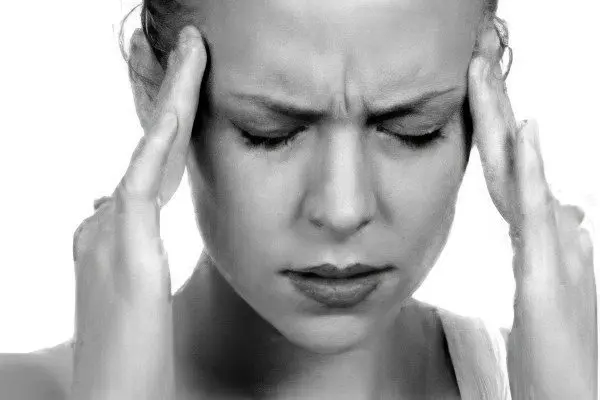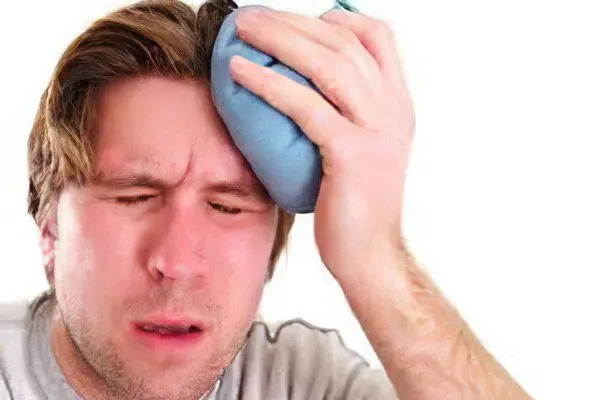Contents
Of course, you have heard that millions of people suffer from headaches. This is a signal of the body about the imbalance in it. By localization, the headache can be frontal, occipital, temporal, mixed. Pain in the temporal region is very common. As a rule, it is not as intense as other types, but can lead to various complications. The appearance of such pain is unpredictable. It may even be the earliest morning, and you will have to regret the interrupted sleep.
Symptoms of a headache in the temple area
By the nature of the manifestation, the pain can be sharp, dull, pulsating in one or both temples. This is due to the location of the temporal artery in this part of the head. This pain can last for several minutes, or it can be debilitating for several hours. Its intensity is determined by the individual characteristics of the organism.
Causes

Often a headache appears as a result of the innervation of the jaw or cervical nerve endings, as well as the upper back, since they are directly related to the nerves of the forehead and temples. Overexertion of any of these nerves can lead to headaches.
You probably know that in most cases headaches are caused by various diseases. Leading in this list are infectious.
Headache is a companion of influenza, tonsillitis, Lyme disease, brucellosis, Dengue fever.
Not getting enough sleep can be a source of prolonged headache. This conclusion was made by doctors at the end of the last century after numerous surveys. People who suffer from insomnia often suffer from headaches as well.
Migraine can cause very sharp pain that radiates to the eyes, often causing nausea to the point of vomiting. May be accompanied by visual disturbances, taste, smell, sometimes photophobia and weakness. The pain often gets worse when walking. Attacks can be short (about half an hour) or long (several hours). Nearly half of migraine sufferers are unaware of their diagnosis. What does it mean? Only one thing – they are deprived of appropriate treatment. You see how important it is to be attentive to yourself and turn to a specialist for help in time!
Menstrual cycle can cause headache in the temples. Pregnancy makes such attacks rare, and childbirth can completely save a woman from this problem.
Hormonal changes during menopause can also contribute to the appearance of headaches.
Decreased intracranial pressure almost always accompanied by a debilitating headache, periodic hearing loss, ringing in the ears. Statistics say that every year, out of one million people, about fifty acquire a severe form of low intracranial pressure.
Pheochromocytoma adrenal is inextricably linked with pain pulsation in the temporal zone. This leads to an excess of produced adrenaline. As a result – a sharp jump in blood pressure, sweating, pallor of the skin, headache. Such bouts of pain last 5 minutes. – 2 hours. If your blood pressure is normal, don’t worry. However, frequent pain in the temporal zone is best discussed with a specialist.
High intracranial pressure (intracranial hypertension) contributes to the appearance of bilateral headache. The situation is aggravated by the presence of whistling noise in the head. This condition is easier to carry in a reclining position. The risk group is made up of people who are prone to fullness. For them, it is preferable to follow a diet.
Intoxication of the body as a result of poisoning, it accompanies not only diarrhea, nausea and vomiting, but also pain in the temples. Alcohol intoxication is widespread. An evening feast always ends with a morning headache.
External factors causing headache in the temples
Carbon monoxide causes dangerous, requiring urgent medical attention, poisoning. He is always accompanied by a general headache.
Twenty-four-hour fasting during a religious fast or for the purpose of losing weight in 39% of people provokes a throbbing pain in the temporal or frontal zone of the head.
Most people experience pain in the temples while climbing to a height of four kilometers. Thirty percent of people feel depressed or anxious.
Four percent of people suffer from headaches during and after a flight. One fifth of people professionally involved in frequent flights suffer from frequent pain in the temporo-frontal region.
Scientists have studied the headache that occurs in the temples as a result of ascents to great heights and descents to great depths (up to 400 meters). Studies have shown that when lifting, the occurrence of headaches is observed much more often. This is explained by the lower oxygen content at high altitude, in particular, in the aircraft cabin.
Treatment of headache in the temple area

Medical treatment
Medicines used for headaches can be divided into several categories, which differ in the strength of their effect:
The safest tool – paracetamol. Start with him, if he helps you, no need to look for something else.
NSAIDs. If paracetamol does not help, try anti-inflammatory drugs such as Ibuprofen (Mig, Nurofen, Faspic), Diclofenac.
Combined analgesics. These are combined preparations of several active substances that are supposed to relieve pain. These include, for example: Citramon, Pentalgin, Solpadein, Novigan.
Triptan. The most powerful painkillers for headaches are taken only with the consent of the doctor. These include: sumatriptan, eletriptan, zolmitriptan, eletriptan.
[Video] Dr. Evdokimenko – types of headaches, how and what is the best way to relieve a headache?









